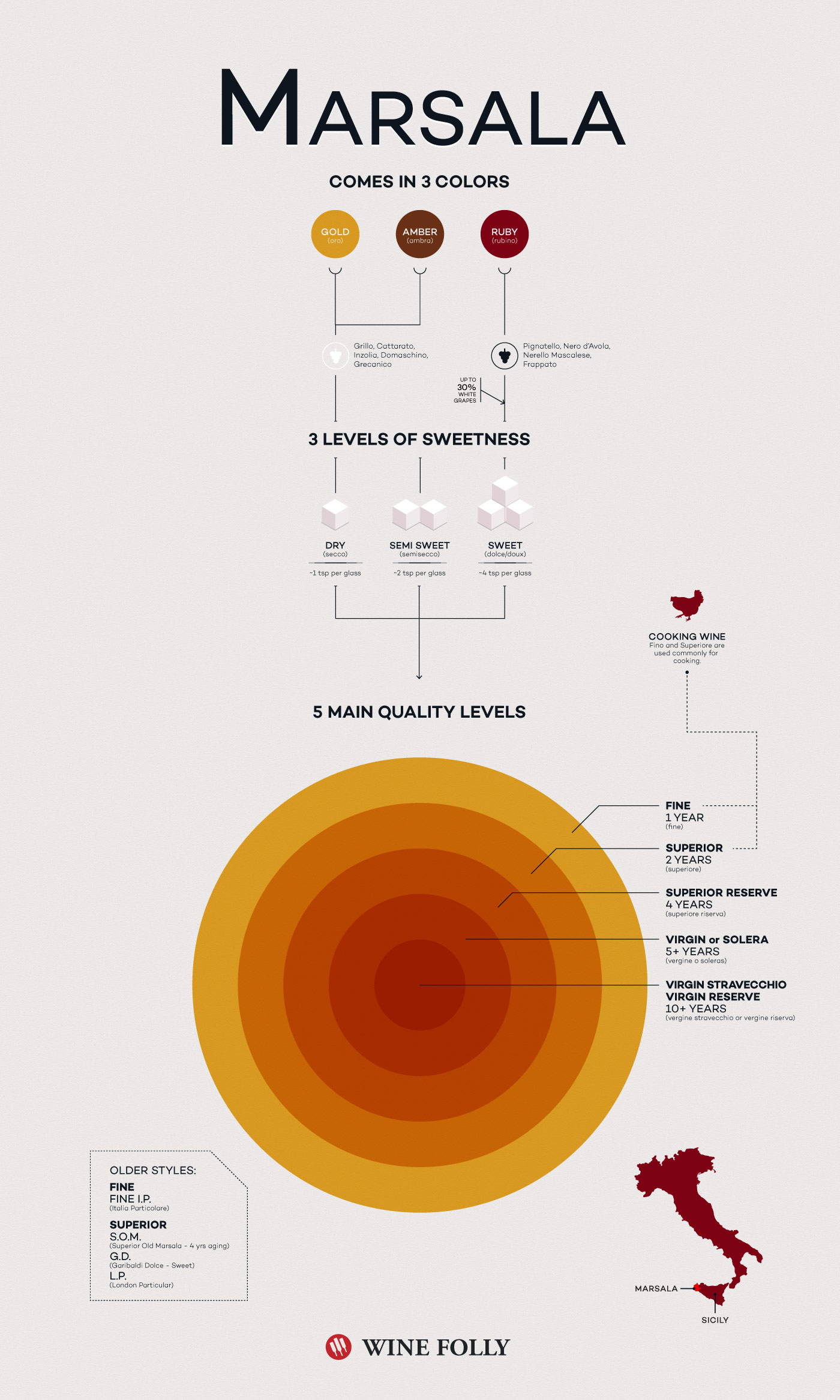Marsala wine is a fortified wine made in Sicily. Marsala is most commonly used in cooking to create nutty, rich caramelized sauces. It’s an amazing addition to the chef’s kitchen.
By the way, if you find a bottle that’s not from Sicily, it should not be trusted!
Cooking with Marsala Wine
Most do best with Dry Marsala. Go for Fine or Superiore for the best quality (and price). Read more on cooking with Marsala below!
Truly, Marsala is so much more than a cooking wine! Many styles are fine enough for sipping, like Sherry or Madeira.
Right now Marsala is undervalued. We hope to bring you up to speed on this unique wine that has some striking taste similarities to Madeira wine.
What does Marsala Taste Like?
The most common flavors are vanilla, brown sugar, stewed apricot and tamarind. Marsala wine ranges from a nearly dry style to sappy sweet and are served slightly cool around 55° F.
If you get the opportunity to try a high-end Marsala, you will experience a larger range of nuanced flavors including morello cherry, apple, dried fruits, honey, tobacco, walnut and licorice.
FOOD PAIRING: Marsala wine pairs wonderfully with some hard-to-match foods such as asparagus, brussel sprouts and chocolate.
HOW LONG DOES MARSALA LAST OPEN? Marsala wine will stay fresh open for about a month. If you’d like to keep it longer, put it in a cool dark place and remove the oxygen before putting on the lid by using a can of wine preserver.
Styles of Marsala Wine
Marsala wine is split up into different styles based on the type of grapes used (white or mostly red) and the winemaking method. You’ll discover that most Marsala made for cooking is Fino or Fine Marsala which is actually the lowest quality level of the wine.
Marsala Wine and Cooking
Here are a couple of things to know about Marsala wine in cooking:

Sweet vs. Dry Marsala Wine For Cooking
- Dry Marsala is typically used for savory entrées where it adds a nutty flavor and caramelization to beef tenderloin, mushrooms, turkey and veal.
- Sweet Marsala is typically used to make very sweet and viscous sauces. You’ll commonly find it used in desserts such as zabaglione and main dishes with chicken or pork loin.
You can substitute Dry Marsala for Sweet Marsala ingredients, but generally not the other way around. Keep a dry Marsala on hand if you’d like more versatility.

MARSALA FOR COOKING: Typically, the entry-level quality Marsala wines are best for cooking –a $10 bottle will last you quite a while. Use a ‘Fine’ or ‘Superiore’ Marsala in either the Gold (oro) or Amber (ambra) styles. Some recipes call for Ruby (rubino) Marsala, but this is rare.
MARSALA SUBSTITUTE: The best substitute for Marsala wine is Madeira because of the similar taste profile. If you can’t find Madeira either, you might try simmering 1 part brandy with 2 parts white wine, brown sugar and a touch of salt.

What Makes Marsala Unique
Marsala wine has a unique taste for two reasons: the use of only Sicilian indigenous grapes and a complex winemaking process. Making Marsala wine is actually pretty difficult:
- Marsala is fortified with brandy or neutral grape spirit usually made with regional grapes.
- A cooked grape must called ‘Mosto Cotto’ gives Marsala its color and its caramel flavor.
- A sweetened fortified wine called ‘Mistella’ is often blended, made from Grillo grapes.
- High-end Marsala wines employ a special aging system called Soleras.

